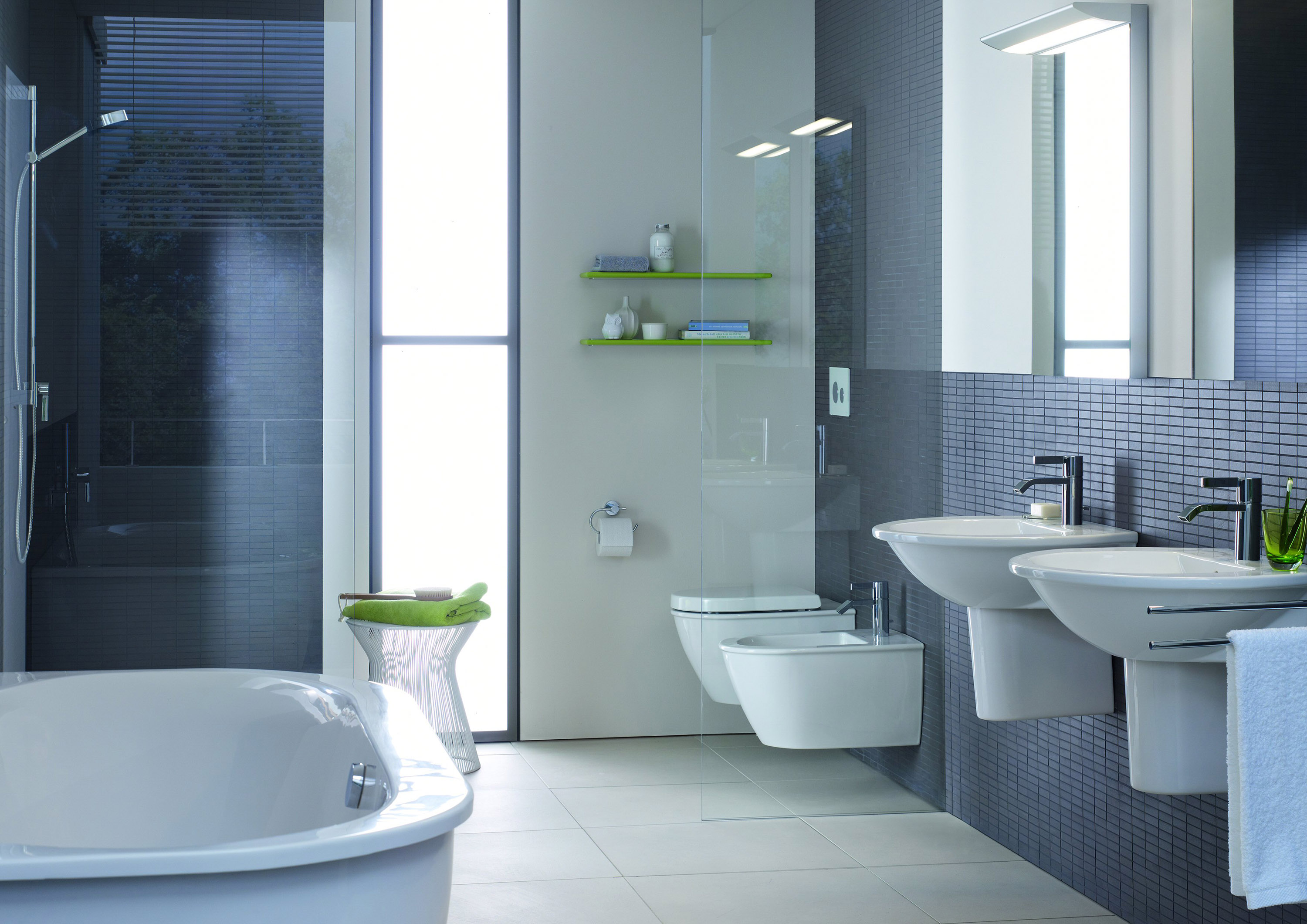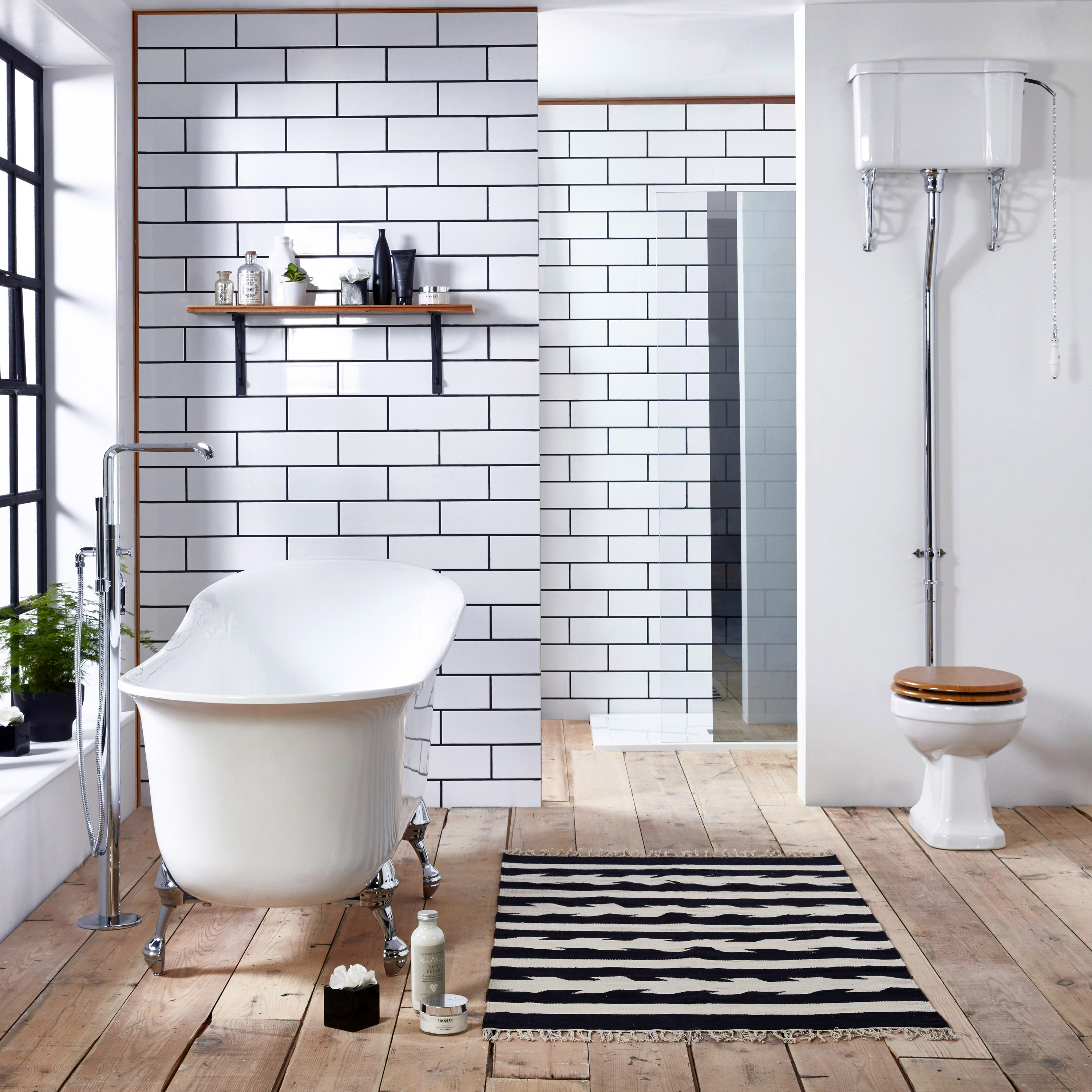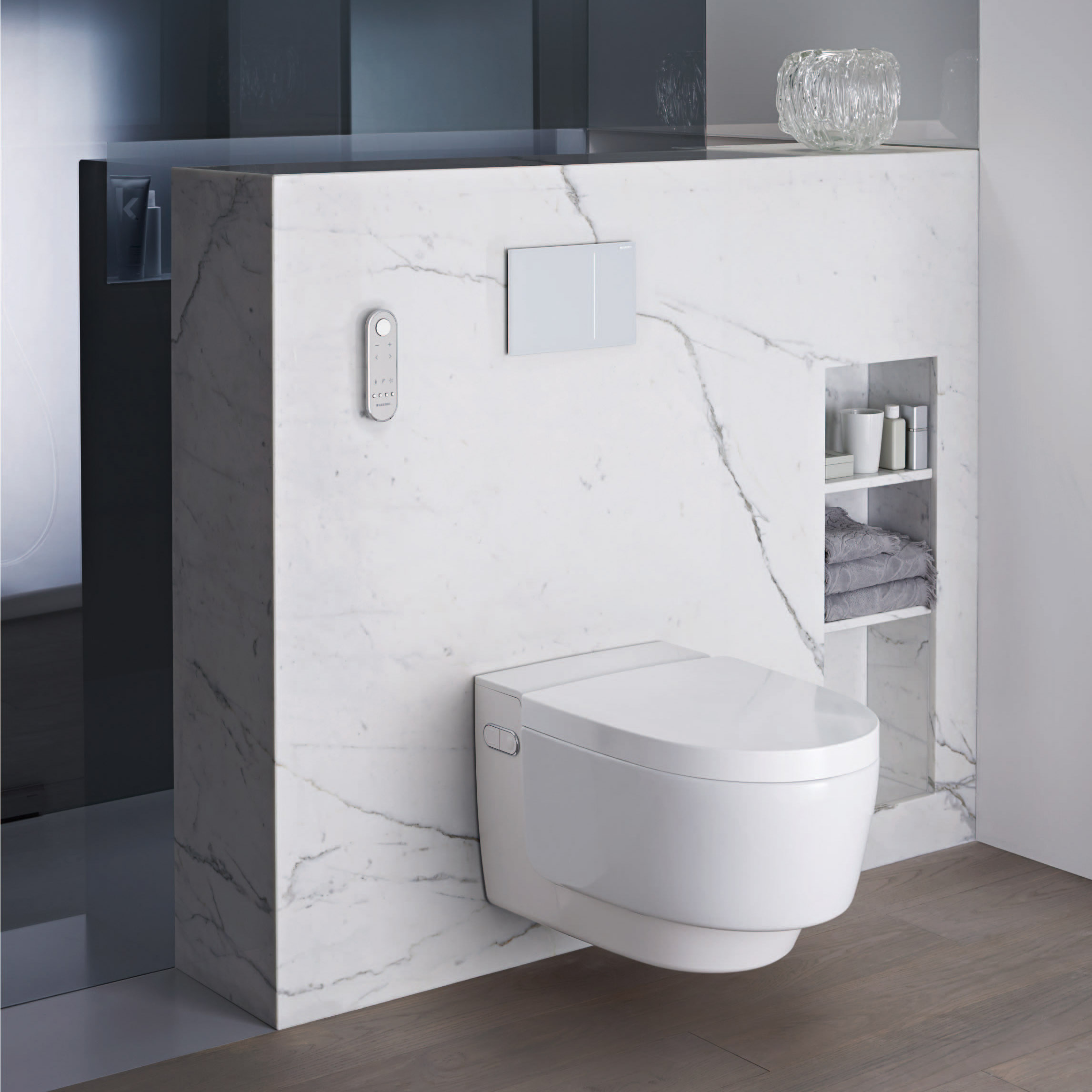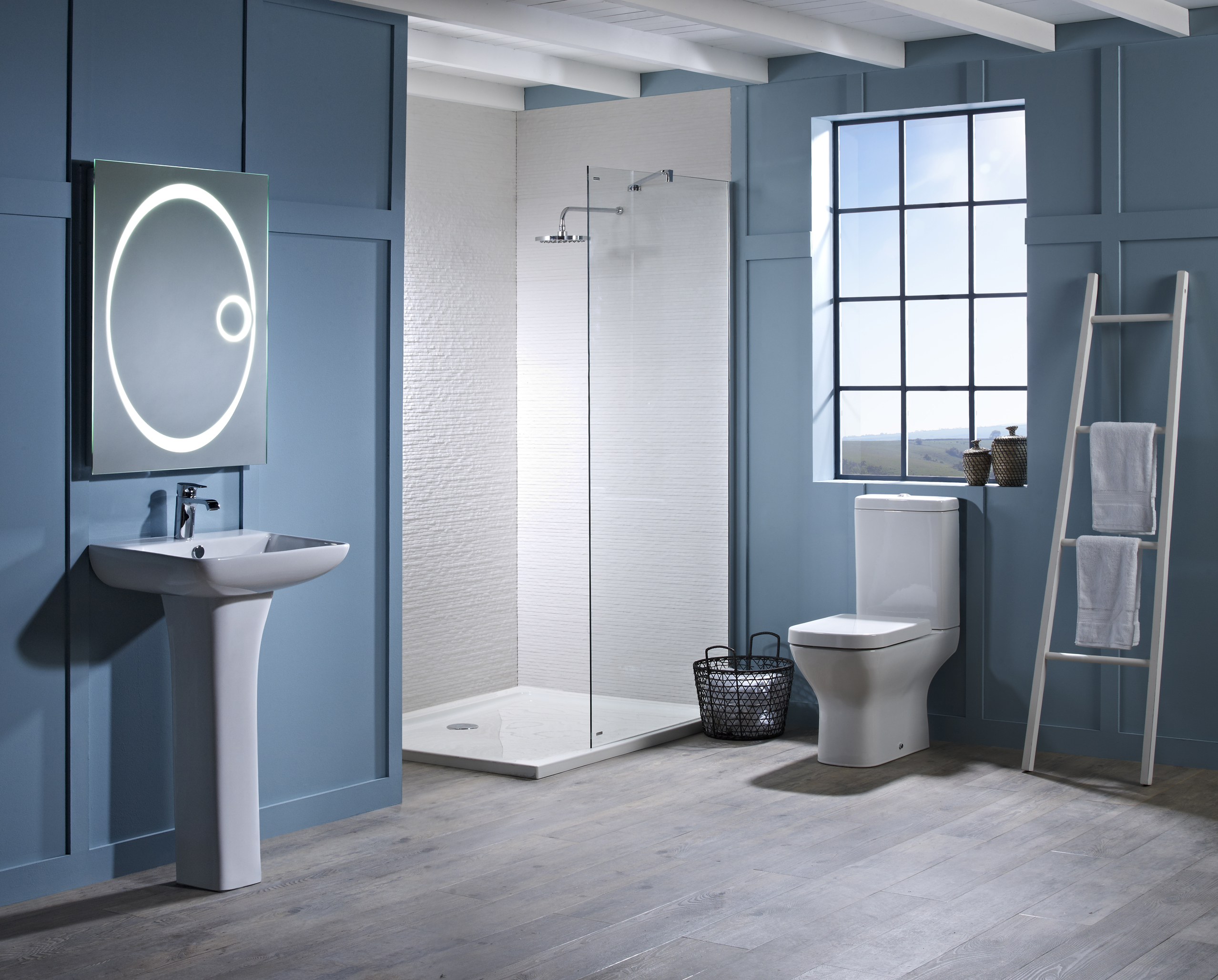How to choose a toilet
Time for a new loo? From high tech to space saving, and traditional to contemporary, there’s a toilet for every bathroom. Check out the choices


When it comes to designing a new bathroom, choosing a new toilet might not have the glamour of a new bath or basin, but there is plenty of choice – and plenty to think about, too. Style, proportions, water use and whether to get a cutting-edge shower toilet all need to be considered if you want the best toilet seat for your bathroom.
Our guide will get you primed and our bathroom ideas feature has you covered too.
- Need to know how to design a new bathroom
- For advice on choosing a bath
- How to choose a bathroom sink
Which types of toilet are available (and which are best)?
Bathroom showrooms, DIY sheds and online stores offer a huge range of designs to suit all room sizes and styles, including sleek modern interiors and historically inspired schemes.
Close-coupled toilets are the most common type. They have a separate cistern that sits on the back of the toilet bowl. Pipework is hidden, so the effect’s neat and cleaning is simple. If you’re looking for a cost-effective option, this is often the best design to choose and it looks great teamed with a pedestal basin.
Close-coupled toilets may come as a single piece or two separate but joined pieces. For a more compact loo and modern look, go for a single piece – these are also easier to clean as there isn’t a gap between bowl and cistern. For the cheapest solution, a two piece is probably the one to buy, though.

Aquila close-coupled toilet with soft close seat, £129.97, Bathroom Takeaway
Back-to-wall toilets are floor standing. They’re a good choice for a streamlined modern look and can help make a small bathroom as spacious as possible. The cistern is hidden behind the pan either in a specially designed unit or in the wall. There’s no pipework on show, so the finish is fuss free and cleaning the room is easier. The cistern is usually sold separately, so factor in this cost when you’re budgeting for your new bathroom.
Wall-hung toilets look contemporary and can make any room feel bigger because the floor right the way to the wall on which the loo is suspended is visible. The cistern is hidden in the wall, and there’s no pipework apparent. A wall frame will be required for installation, so this makes them a better option for new bathrooms rather than retro-fitting in place of an older loo.
High and low-level cistern toilets complement other traditional fittings to give a bathroom historic style. The cistern is on show and wall mounted, and the flush is often a lever or pulley design. The pan is floor standing and the two are joined by the flush pipe. They’re ideal for high-ceilinged rooms, making the most of the room’s lofty proportions, but you can get the look in a lower ceilinged room as designs with a shorter flush pipe are on offer.

High level WC with soft close quick release wooden seat, £495, Frontline Bathrooms
Corner toilets have a cistern shaped to fit right into the corner of a room to save space in a small bathroom or cloakroom. The soil pipe exits in the normal way, though.
Cloakroom toilets are space savers you could equally use in a small bathroom. They may be wall-hung, back-to-wall or close-coupled designs. They’re made to take up less of the room, but achieve this with different design features, so it’s worth browsing to see which is the most effective version for your small room.
Shower toilets are loo and bidet in one. The shower toilet has a nozzle that creates spray and warm air dries afterwards, so toilet paper isn’t necessary. They may also have features such as odour extraction, a heated seat, automatic flush and even a night light.

AquaClean Mera shower toilet, from £3,572, Geberit
Toilet shapes, heights and widths
Take into account the shape and height of the loo when you’re buying because both will affect comfort levels when seated, access and the space the toilet takes up.
Elongated seats are probably more comfortable, but project further into the room than round ones. Small bathroom? Round is the way to go to save space.
Families with young children may want to opt for lower toilets. Conversely, a higher seat may mean older or less mobile users can use the loo without assistance.
Opting for a wall-hung toilet can be a sound strategy so the toilet can be positioned at a height convenient for a home’s occupants.
Elbow room and space to clean are important, too. Around a metre of space is best, so if the room’s small, go for a narrower toilet design. The space between the back wall and the centre of the sewer drain outlet (the rough in) is also important when measuring up to verify there’s sufficient depth available for the WC. Swapping an old toilet for new? Matching measurements are convenient and money saving.

Wall-mounted WC, around £332, Darling New range, Duravit
Toilet features to look out for
Think of your pocket (if you’re on a water meter) and sparing natural resources and look for a toilet with a dual flush. This way, only the water necessary will be used on each occasion the toilet’s flushed.
Check out the size of the trapway – that’s the exit route of the waste from the bowl. The bigger it is, the less likely blockages are to occur.
It’s not an essential, of course, but a soft close seat and lid will avoid a horrible clatter if either are dropped rather than lowered. Bear in mind that not all toilets come with seats, so do check when you’re budgeting.

WC with soft close seat, £428, Structure Suite by Tavistock, The Pure Bathroom Collection from Smiths Briten
Styles of toilet
If you’re creating a contemporary bathroom, you’ll be spoiled for choice among close-coupled, back-to-wall, wall-hung and corner and cloakroom toilets. Some are more curvaceous and others have sharper outlines. The loo doesn’t need to match other fittings as part of a suite for a successful scheme, but do think about creating a consistent feel to pull the look together. Contemporary designs are generally easy to clean, too.
Traditional toilets have more intricate lines and design detail that’ll harmonise with classic pedestal basins and a roll-top bath.
What about toilet plumbing?
Check the waste outlet specification when you’re buying. Most toilets have a P-trap outlet which exits through the wall behind the pan. There are also S-traps, which go down through the floor. If you’re replacing a pan in an older home, check which you require or call in a plumber for advice. Our guide to bathroom plumbing covers the basics.
Read more about choosing sanitaryware for your bathroom:
- Pick the best bath
- Find the right basin
- All you need to know about choosing bathroom taps
- Choose a shower
- Learn about the different shower enclosure options
Get small space home decor ideas, celeb inspiration, DIY tips and more, straight to your inbox!

Sarah is a freelance journalist and editor writing for websites, national newspapers, and magazines. She’s spent most of her journalistic career specialising in homes – long enough to see fridges become smart, decorating fashions embrace both minimalism and maximalism, and interiors that blur the indoor/outdoor link become a must-have. She loves testing the latest home appliances, revealing the trends in furnishings and fittings for every room, and investigating the benefits, costs and practicalities of home improvement. It's no big surprise that she likes to put what she writes about into practice, and is a serial house revamper. For Realhomes.com, Sarah reviews coffee machines and vacuum cleaners, taking them through their paces at home to give us an honest, real life review and comparison of every model.